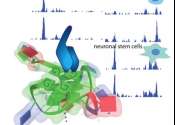Treating pets for cancer can revolutionize care for humans
Our animal companions bring us joy and love us unconditionally. There is no question that our pet dogs and cats play an important role in our lives as companions.

Our animal companions bring us joy and love us unconditionally. There is no question that our pet dogs and cats play an important role in our lives as companions.
Veterinary medicine
Mar 30, 2022
0
4

The p53 protein protects our cells from cancer and is an interesting target for cancer treatments. The problem is, however, that it breaks down rapidly in the cell. Researchers at Karolinska Institutet in Sweden have now ...
Biochemistry
Mar 14, 2022
0
348

The building blocks of life-saving therapeutics could be developed in days instead of years thanks to new software that simulates evolution.
Biochemistry
Feb 24, 2022
0
59

Laser-driven ion acceleration has been studied to develop a compact and efficient plasma-based accelerator, which is applicable to cancer therapy, nuclear fusion, and high energy physics. Osaka University researchers, in ...
Optics & Photonics
Feb 16, 2022
0
501

While investigating the unusual G quadruplex DNA structure (G4), the Simon Elsässer group has developed a more accurate method for mapping these structures in the genome. G4 CUT&Tag revealed numerous G4s in the human and ...
Biotechnology
Dec 6, 2021
0
52

Researchers at MIT and Harvard University have designed a way to selectively turn on gene therapies in target cells, including human cells. Their technology can detect specific messenger RNA sequences in cells, and that detection ...
Biotechnology
Oct 28, 2021
0
388

Advanced mathematical analysis of the ionization of a helium atom by an impacting proton has revealed where discrepancies arise between experiments and existing theoretical calculations of the process
General Physics
Aug 6, 2021
0
412

As a minimally-invasive method for cancer therapy at precise locations, NIR-induced photothermal therapy (PTT) has drawn extensively attention. The therapeutic mechanism is the use of photothermal agents (PTAs) in the treatment ...
Bio & Medicine
Jul 13, 2021
0
4

Cancer is the second leading cause of death globally. In 2018, there were 18.1 million new cases and 9.5 million cancer-related deaths worldwide. By 2040, the number of new cancer cases per year is expected to rise to 29.5 ...
Bio & Medicine
Jun 28, 2021
0
9

Scientists at Tokyo Institute of Technology (Tokyo Tech) have designed an eco-friendly protocol for synthesizing gold nanoparticles with optimized morphology for near-infrared light absorption using a biomolecule called B3 ...
Bio & Medicine
Jun 28, 2021
0
21